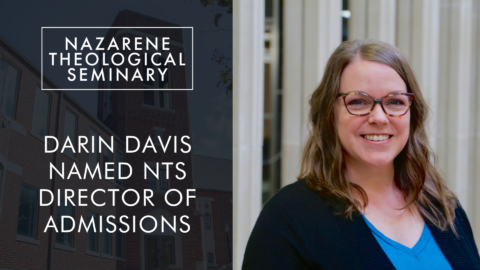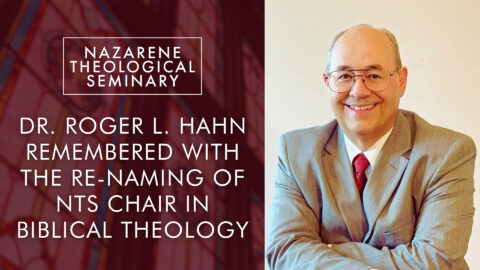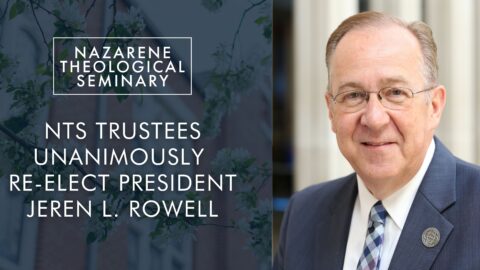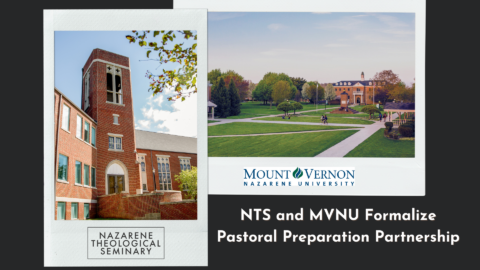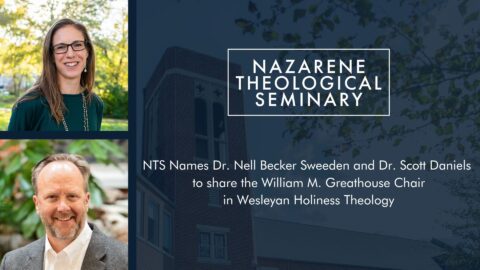June 1, 2021
Does theological education have a future?
Yes – if deserts, garden beds, and sprinklers are in the future. But first, to the question itself, it’s not unfair to be concerned about the future of theological education as we know it.
A recent article by Christian Century revealed the closure of 25 nonprofit colleges since 2016 and an additional 9 seminaries in the past decade. To be fair, all news is not dire. Enrollment within the Association of Theological Schools has seen a surprising increase in the last three years. But even with the good news, it is tough to avoid feeling anxious about the future beneath a steady current of social, political, and religious crises.
We didn’t learn to see the future with a negative lens overnight. Nearly a century ago, Aldous Huxely’s Brave New World shifted the way we imagine the future. Huxley gave words to the growing anxiety that early 20th-century optimism had overestimated the potential of human progress. Huxley visualized a larger transition underway in the 20th century: a perspective shift from future utopia to future dystopia, from “look what humans will accomplish” to “look what humans will destroy.”
Huxley is not to blame as he provided words and images to felt anxieties and concerns, but a century later, dystopia has become the default view of the future. Some days, it feels as if we are waiting for everything to fail; to be frank, a hopeful future is hard to imagine when all you know how to see is destruction. When our visualization of the future orbits around impending demise, we become blinded to the images of hope that can transform our dystopian lenses to new ones, enabling us to view the long eternal future that God is ushering in.
To see the hopeful future of theological education, a new lens is needed – a lens that allows us to build the type of education and organization that matches images provided by Jesus, the Bible, and the Church. A hopeful future for theological education does not come to us through blind optimism but through a renewal of our vision to faithful imagery. Images like a desert, a garden bed, and a sprinkler:
- Theological education is like a desert. Over time, higher education has been viewed as a machine that one chooses in order to be “produced” into a professional. The Bible offers a different view of ministry preparation – not as school for mechanics but for formation. We see this in the stories of Noah, Abraham, Moses, Jonah, Jesus, Paul, and many others. The period of ministry preparation was often characterized by a deliberate move into an isolated place, like a boat in the middle of a sea, or in the belly of a whale, or in the separation of a desert. These deliberate places in the Bible characterized a place for preparation, a place to hear God, and a place to become formed in the identity of God’s call.As theological education faces the perils of declining metrics, it will need to resist the temptation to think about its purpose as a product it provides to future professional ministers. Instead, its purpose is to remain connected to the rich biblical imagery of a deliberate environment where the called of God go to separate from the demands of culture for the purpose of formation.
- Theological education is a garden bed. Seminary literally means “seedbed.” If we are to think about theological education as more than a product in an overcrowded market, how are we to envision it? The word seminary was given to theological education as a metaphor, to think about its important work in the formation of the minister like the critical process that a seed undergoes in the garden bed. In this metaphor, we come to think about ministry preparation as a gardener who works the soil to ensure a healthy environment for planting. Then, the gardener buries a seed, allowing it to surrender to the life-giving organics of the soil. From the soil rises a transformed seed that has traveled from release to rebirth, and a new plant is sprouted. With this new creation comes new fruit, and the whole process born of the gardener’s work. This is the image “seminary” describes.
- Theological education provides irrigation to the Church. Our final image concerns the practices of recruitment. How do we populate our schools with future students? The pinnacle of priority is to trust the continual work of the Holy Spirit in setting apart women and men for the work of ministry. Justo Gonzales, a career academic, offers a fresh visual for the future of recruitment. Instead of using the common image of a “pipeline” as the metaphor for recruitment, Gonzales suggests a system of irrigation. A pipeline recalls the work of the oil industry that carries a product from source to distribution in the most efficient manner. Used in recruitment, a pipeline is about filling stages of recruitment from interest to enrollment. It’s about getting students in and as quickly as possible. On the other hand, the irrigation system is not concerned with the transportation of a product, but with providing life and nurture to the plant. Thinking about recruitment in terms of irrigation invites us to imagine the work of theological education as God’s promise to water the Church, to provide for God’s plant. In this way, theological education is not about growing our enrollment, but entrusting our institution as the vehicle that carries the water.
The future of theological education remains solid in the hands of God because it is through the will of God that those certain women and men are set apart to water the world. As we imagine the type of institutions that will provide ministry formation, may we keep in mind the desert, the garden bed, and the sprinkler.

Rev. Jake Edwards
Enrollment Counselor



